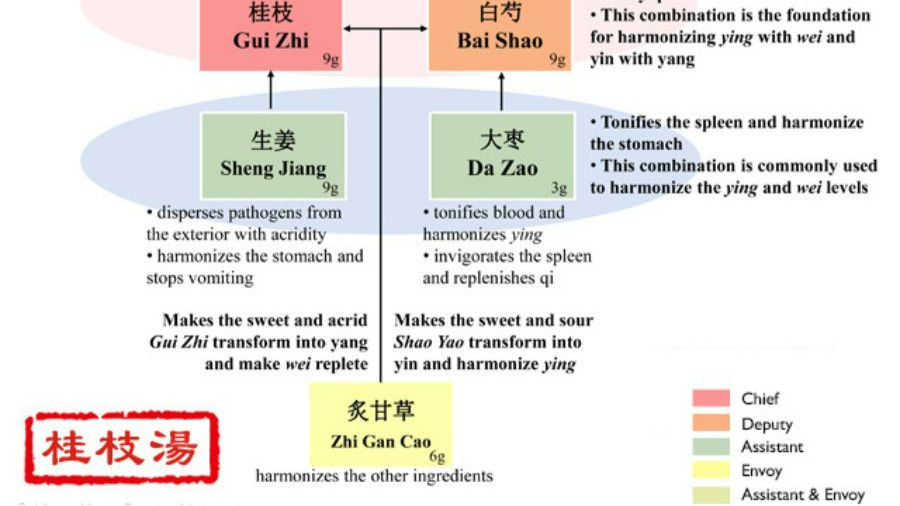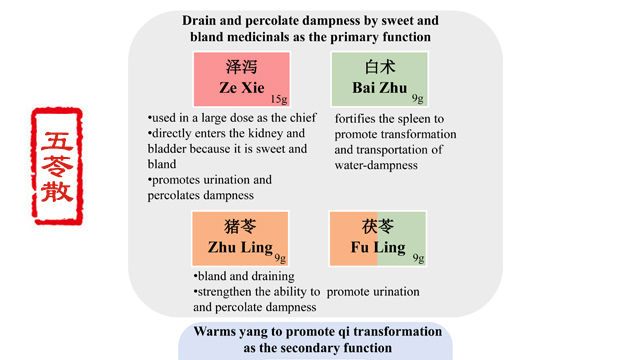Ban Xia Hou Pu Tang: A Classic TCM Formula for Throat Relief and Emotional Balance
- Health Lab

- Nov 18, 2024
- 5 min read
Updated: May 6
Ban Xia Hou Pu Tang, a revered Traditional Chinese Medicine (TCM) formula from Treatise on Febrile and Miscellaneous Diseases, is celebrated for its ability to promote energy flow, clear stagnation, ease throat discomfort, and dissolve phlegm.
It’s especially effective for “plum pit qi,” a sensation of something stuck in the throat that can’t be swallowed or coughed up, often accompanied by chest tightness, coughing, or nausea. This time-honored remedy remains a go-to for both physical and emotional imbalances.

History and Origins of Ban Xia Hou Pu Tang
Rooted in Zhang Zhongjing’s Shanghan Zabing Lun, Ban Xia Hou Pu Tang targets plum pit qi, a condition TCM links to emotional stress causing liver energy stagnation. When emotions like sadness or frustration block the liver’s natural flow, it disrupts the spleen, stomach, and lungs, leading to phlegm buildup that clogs the throat.
In ancient texts like Golden Treasures and Prescriptions for Emergencies, this formula was often listed under women’s health, as women were thought to be more prone to emotional distress. Later, scholars like Wu Qian clarified that men can experience plum pit qi too, broadening its use.
Ingredients and Their Benefits
Ban Xia Hou Pu Tang combines five herbs to restore balance and clear blockages:
Pinellia: Warm and spicy, pinellia calms the stomach, directs energy downward, and clears lung phlegm, while drying dampness to reduce congestion.
Magnolia Bark: Bitter and warm, magnolia bark relieves chest tightness and bloating by promoting smooth energy flow and easing stagnation.
Poria (Tuckahoe): Mild and sweet, poria strengthens the spleen, reduces excess moisture through urine, and prevents phlegm buildup.
Ginger: Spicy and warm, ginger warms the stomach, disperses phlegm, boosts vitality, and stops nausea.
Perilla Leaf: Aromatic and warming, perilla leaf awakens the spleen, regulates lung and liver energy, and helps clear stagnation.
Together, these herbs soothe the throat, calm the mind, and restore smooth energy flow.
Conditions It Treats
Ban Xia Hou Pu Tang is ideal for symptoms and conditions tied to phlegm and energy stagnation, including:
Throat Discomfort: A persistent feeling of a lump in the throat (plum pit qi).
Respiratory Issues: Cough, excessive phlegm, or shortness of breath.
Digestive Problems: Nausea, bloating, loss of appetite, or dizziness.
Emotional Symptoms: Depression, irritability, or anxiety.
Women’s Health: Irregular menstruation or menopausal symptoms.
Tongue and Pulse Signs: Greasy or thin white tongue coating; slippery or stringy pulse.
Modern Conditions: Chronic pharyngitis, bronchitis, gastritis, anxiety disorders, depression, esophagitis, gallstones, or even serious conditions like laryngeal or oral cancer when symptoms align.
Modern research highlights its benefits: pinellia reduces inflammation and cough; magnolia bark fights bacteria and boosts digestion; poria enhances immunity; ginger combats nausea; and perilla leaf eases allergies and inflammation.
Dietary Support
Pairing Ban Xia Hou Pu Tang with simple recipes can enhance its effects:
Barley and Red Bean Soup
Ingredients: 50g barley (coix seed), 50g red beans, rock sugar to taste.
Method: Soak barley and beans for 2 hours, boil in water, simmer 1 hour, add rock sugar until dissolved.
Benefits: Strengthens the spleen and clears dampness.
Poria Porridge
Ingredients: 30g poria powder, 100g rice, rock sugar to taste.
Method: Boil rice in water for 30 minutes, add poria powder, cook 10 minutes, sweeten with rock sugar.
Benefits: Supports spleen health and reduces moisture.
Perilla Leaf Scrambled Eggs
Ingredients: 50g perilla leaves, 2 eggs, salt to taste.
Method: Chop perilla leaves, mix with eggs and salt, fry in a hot pan until set.
Benefits: Promotes energy flow and eases chest tightness.
Magnolia Bark and Tangerine Peel Tea
Ingredients: 5g magnolia bark, 3g tangerine peel, rock sugar to taste.
Method: Boil herbs in water, simmer 15 minutes, add rock sugar until dissolved.
Benefits: Relieves bloating and clears phlegm.
Precautions
Ban Xia Hou Pu Tang is not suitable for everyone:
Avoid it if you have signs of heat, such as a flushed face, bitter taste, or red tongue with little coating, as its warm herbs could worsen these symptoms.
It’s not ideal for those with yin deficiency, low body fluids, or excessive internal heat.
Consult a TCM practitioner, especially if you have chronic conditions or are pregnant, to ensure safe use.
Conclusion
Ban Xia Hou Pu Tang is a powerful TCM formula with a rich history of relieving throat discomfort, clearing phlegm, and easing emotional stress. Its blend of pinellia, magnolia bark, poria, ginger, and perilla leaf tackles both physical and mental symptoms, from plum pit qi to anxiety.
Pair it with spleen-supporting foods like barley soup or poria porridge for optimal results. Always work with a TCM expert to use it safely and effectively, letting this ancient remedy restore your balance and well-being.
Chinese Name | 半夏厚朴湯 |
Phonetic | Ban Xia Hou Po Tang |
English Name | Pinellia and Officinal Magnolia Bark Decoction |
Classification | Qi-regulating formulas |
Source | 《Essentials from the Golden Cabinet》Jin Gui Yao Lue《金匱要略》 |
Combination | Pinelliae Rhizoma (Ban Xia) 1 sheng (12g), Magnoliae Officinalis Cortex (Hou Po) 3 liang (9g), Poria (Fu Ling) 4 liang (12g), Zingiberis Rhizoma Recens (Sheng Jiang) 5 liang (15g), Perillae Folium (Zi Su Ye) 2 liang (6g) |
Method | Prepare as a decoction. |
Action | Moves qi and dissipates masses, directs counterflow downward and dissolves phlegm. |
Indication | Ban Xia Hou Po Tang is indicated for plum-stone qi (globus hystericus). The symptoms are fullness and tightness in the chest and diaphragm, coughing, and vomiting. The tongue coating is white and moist or white and glossy. The pulse is wiry and slow or wiry and slippery. |
Pathogenesis | Plum-stone qi primarily manifests a sensation that something is lodged, obstructing the throat that can be neither removed through emesis nor swallowing. However, there is no problem swallowing food. This pattern is often caused by stagnant qi and phlegm obstructing the throat. Emotional frustration leads to liver qi stagnation. The lung and stomach fail to diffuse and govern descent; therefore, the body fluid cannot be distributed normally. It will instead accumulate as phlegm and bind with qi to obstruct the throat. This is why the patient has the sensation. When the lung and stomach fail to diffuse and govern descent, the qi movement in the chest is disturbed and becomes pathological. The result is chest and rib-side fullness and oppression, cough, wheezing, nausea, and vomiting. According to the pathogenesis of this pattern, the treatment principle is to move qi, dissipate masses, direct counterflow downward, and dissolve phlegm. |
Application | 1. Essential pattern differentiation Ban Xia Hou Po Tang is commonly used to treat plum-stone qi caused by binding constraint of phlegm and qi. This clinical pattern is marked by sensation that something is lodged, obstructing the throat, the sensation cannot be removed through neither emesis nor swallowing, fullness and tightness in the chest and diaphragm, white, greasy coating, wiry, slippery pulse. 2. Modern applications This formula may be used in the following biomedically defined disorders, when the patient shows signs of binding constraint of phlegm and qi: hysteria, gastric neurosis, chronic pharyngitis, chronic bronchitis, and esophageal spasm. 3. Cautions and contraindications This formula contains many medicinals that are acrid-warm and bitter-drying. They are only suitable in cases of binding constraint of qi and phlegm without heat. This formula is not applicable for patients suffering plum-stone qi due to qi constraint transforming into fire, yin damage, and insufficient fluid with red cheeks, bitter taste in the mouth, and a red tongue with a scanty coating. |
Remark | Officinal Magnolia (Magnolia officinalis) is listed as "Endangered" in the International Union for the Conservation of Nature and Natural Resources (IUCN) Red List of Threatened Species. |




Comments